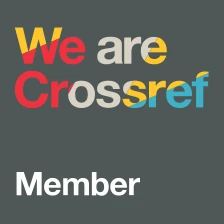Between Hope and Hype: Critical evaluations of technology’s role in anti-trafficking
Launch of issue 14 of Anti-Trafficking Review, ‘Technology, Anti-Trafficking, and Speculative Futures’
Guest Editors: Jennifer Musto and Mitali Thakor
Editor: Borislav Gerasimov
Over the past decade, scholars, activists, and policymakers have repeatedly called for an examination of the role of technology as a contributing force to human trafficking and exploitation. Attention has focused on a range of issues from adult services websites and the use of social media to recruit victims to the utilisation of data analytics software to understand trafficking and identify ‘hotspots of risk’. At the same time, technology has also been positioned as a disruptor of human trafficking that can be reworked and transformed ‘from a liability into an asset’. Yet, critical anti-trafficking scholars have cautioned that claims about the relationship between technology and trafficking rely on limited data and a number of assumptions.
The new issue of Anti-Trafficking Review explores these assumptions and the currently available technological tools that purport to address trafficking and exploitation. An article by Sanja Milivojevic, Heather Moore, and Marie Segrave traces the discourse surrounding technology and (anti-)trafficking since the early 2000s and outlines four common myths on which it is built. The authors call for more evidence but also more attention to issues such as fair labour migration regimes and decent work. Three articles – by Stephanie Limoncelli; Laurie Berg, Bassina Farbenblum, and Angela Kintominas; and Annie Isabel Fukushima – analyse various apps developed with the goal of combating exploitation. They show that many of these apps have limited, if any, benefit for trafficked persons or at-risk groups, while largely reinforcing neoliberal economic ideologies about the limited role of governments in regulating businesses. Such apps can only be useful when they are developed by, for, and with the people meant to use them, as Fukushima’s article demonstrates. Another three articles focus on the practice of shutting down websites hosting sex work ads as a way to reduce trafficking in the sex industry. Samantha Majic compares the public reactions to the shutting down of MyRedbook and Rentboy – sites used by, respectively, female and gay male sex workers. She urges the LGBT movement to overcome its ‘respectability politics’ and show greater solidarity with the sex worker rights movement. Erin Tichenor’s article documents the impact of the shutting down of Backpage on sex workers in New Zealand, while Danielle Blunt and Ariel Wolf examine the impact of the same in the United States. Both articles demonstrate how closing sex work ads sites has negative economic and emotional consequences for sex workers. Writing from the perspective of an NGO providing direct assistance to trafficked persons, Isabella Chen and Celeste Tortosa reflect on the use of digital evidence in human trafficking investigations and prosecutions. In the final article, Kate Mogulescu and Leigh Goodmark show what happens to survivors of human trafficking who are prosecuted as traffickers and placed on sex offender registries in the United States.
Taken together, the articles in this Special Issue converge around one central point: the factors that enable and sustain human trafficking and exploitation are complex and require political will – not tech solutionist fixes. Anti-traffickers’ obsession with technological ‘solutions’ draws attention and resources away from issues such as decent work, gender, economic and racial justice, the free movement of people, and quality public services. In the current COVID-19 pandemic it is more urgent than ever to re-focus on these larger socio-economic and political issues.
View the new issue at www.antitraffickingreview.org
Watch a short video where Annie Isabel Fukushima speaks about her article “Witnessing in a Time of Homeland Futurities” here.



